Abstract
OBJECTIVE: To describe benzodiazepine prescribing for elderly people living in the community in British Columbia, and to compare such prescribing with an indicator of current guidelines. DESIGN: Descriptive analysis of pharmacy billing data. SETTING: Province of British Columbia. PARTICIPANTS: All elderly persons (age 65 and older) dispensed benzodiazepines by community pharmacies in British Columbia during 1990. MAIN OUTCOME MEASURE: Potentially inappropriate prescriptions were defined by a maximum 2-month limit of 20 diazepam equivalents daily, as determined by the BC Drug Usage Review Program in consultation with experts in the field. Physicians' rates of potentially inappropriate prescribing were determined per 100 benzodiazepine prescriptions written. RESULTS: Almost 24% of elderly people in British Columbia were prescribed benzodiazepines at least once during 1990. Of these, 17.1% were given potentially inappropriate prescriptions. Physicians who prescribed benzodiazepines most frequently had the highest rates of potentially inappropriate prescriptions. CONCLUSION: Prescribing practice does not correspond with our indicator of current guidelines.
Full text
PDF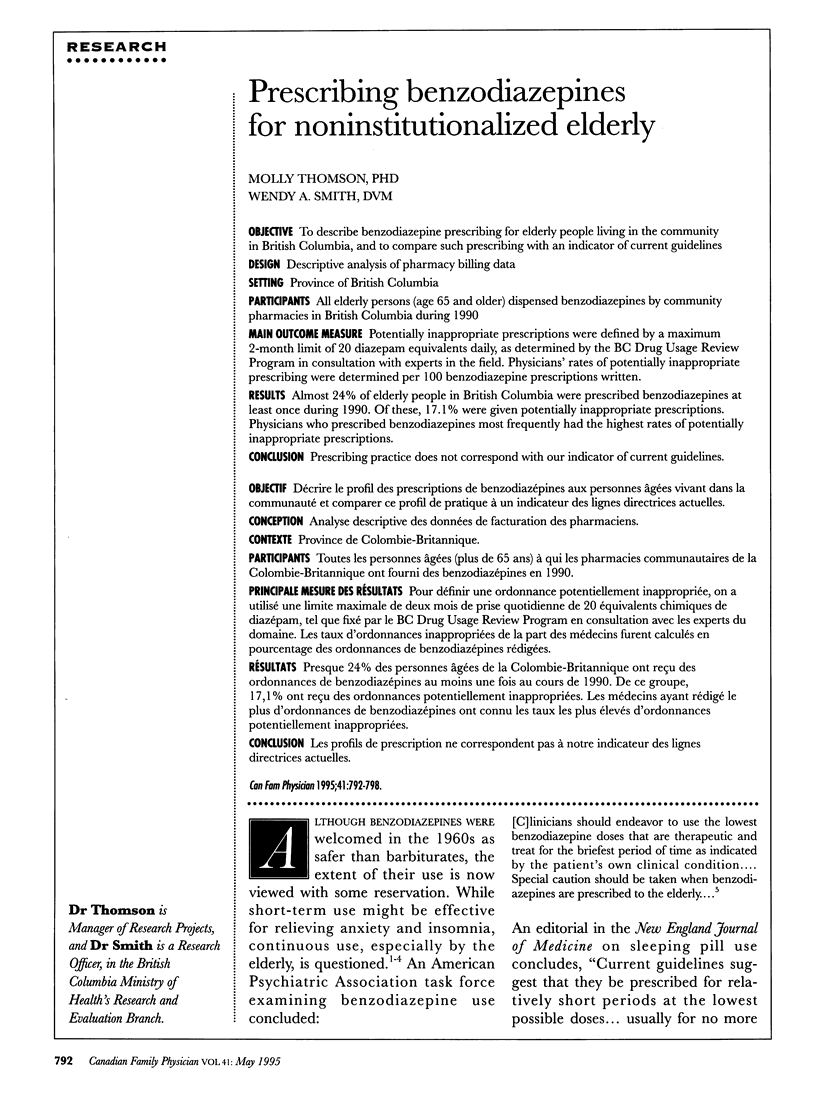

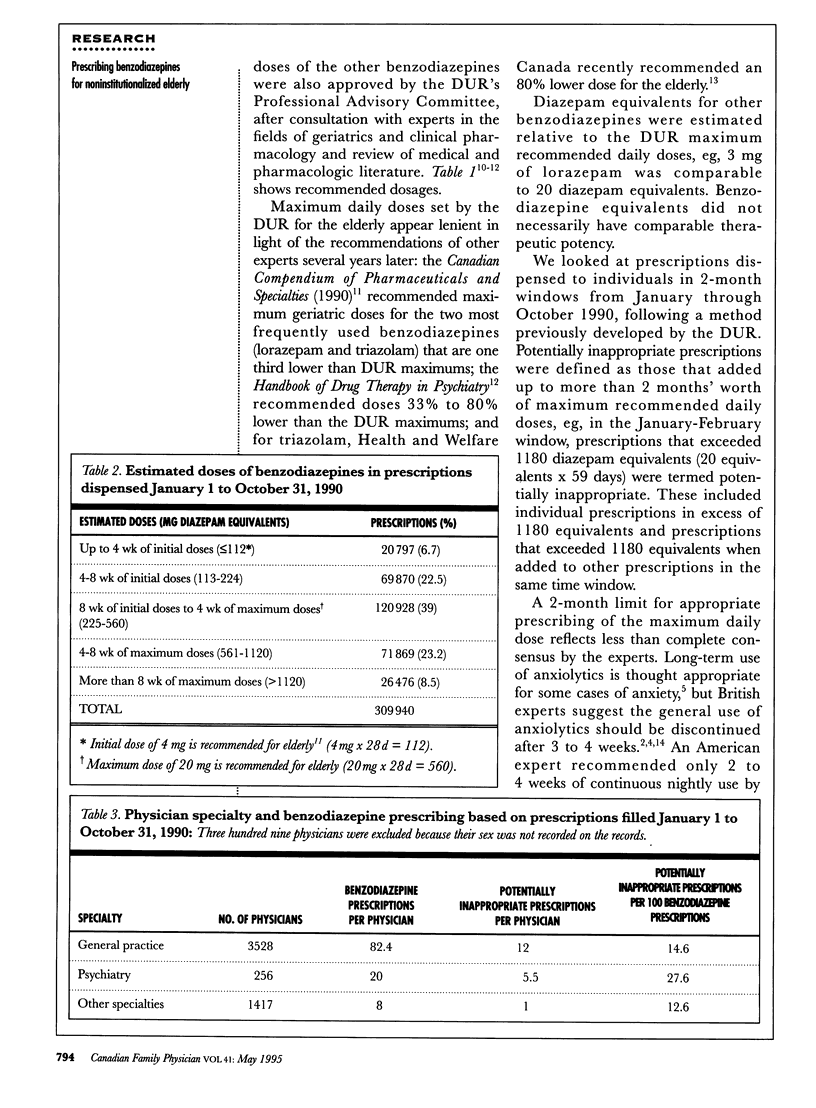
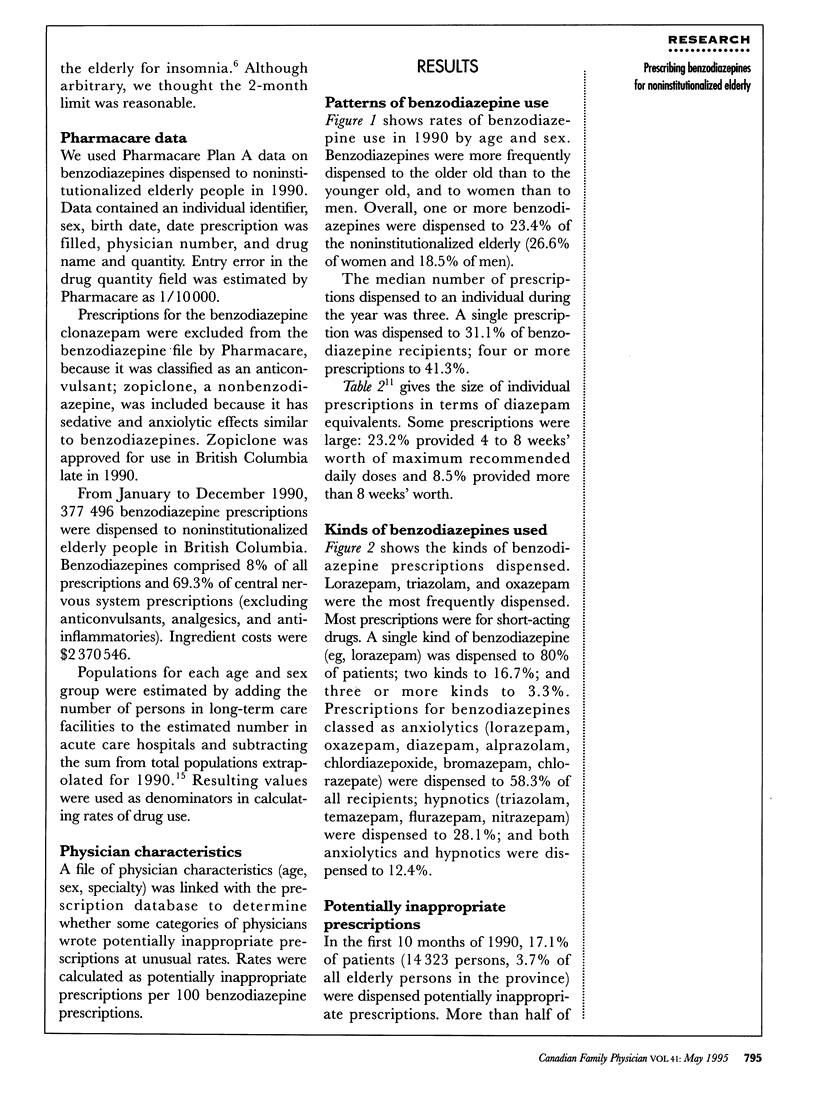
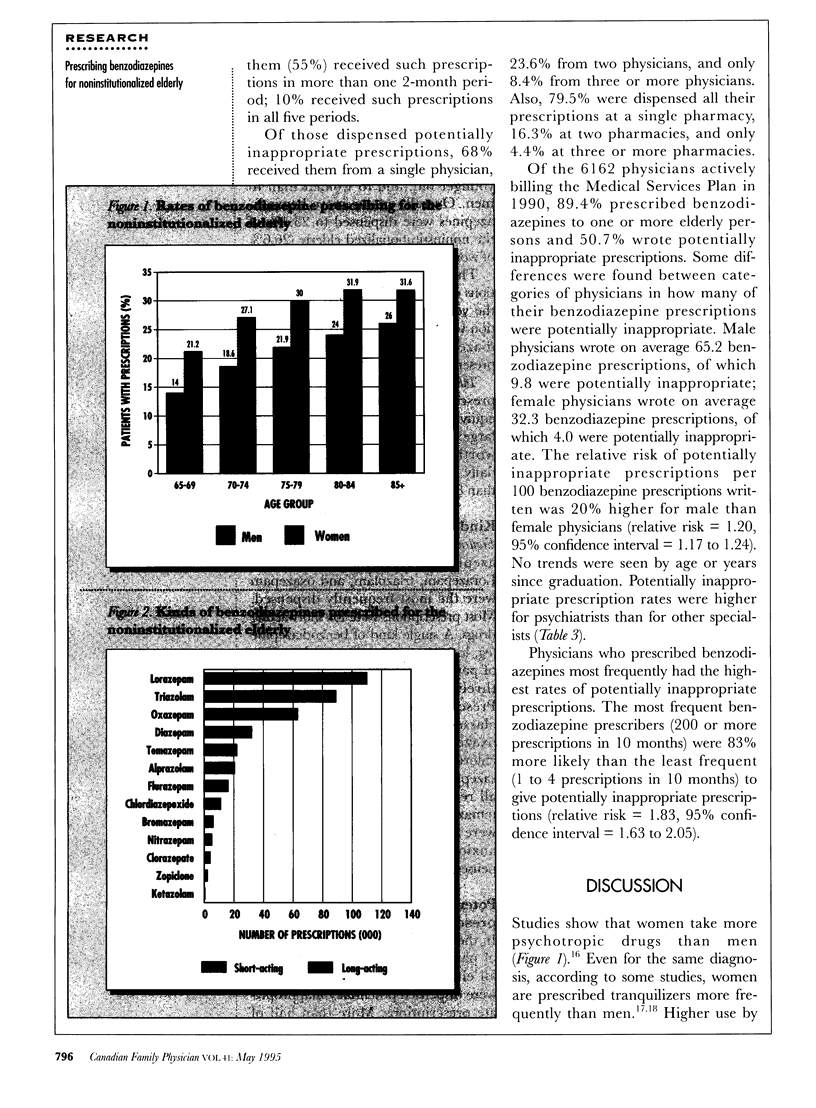
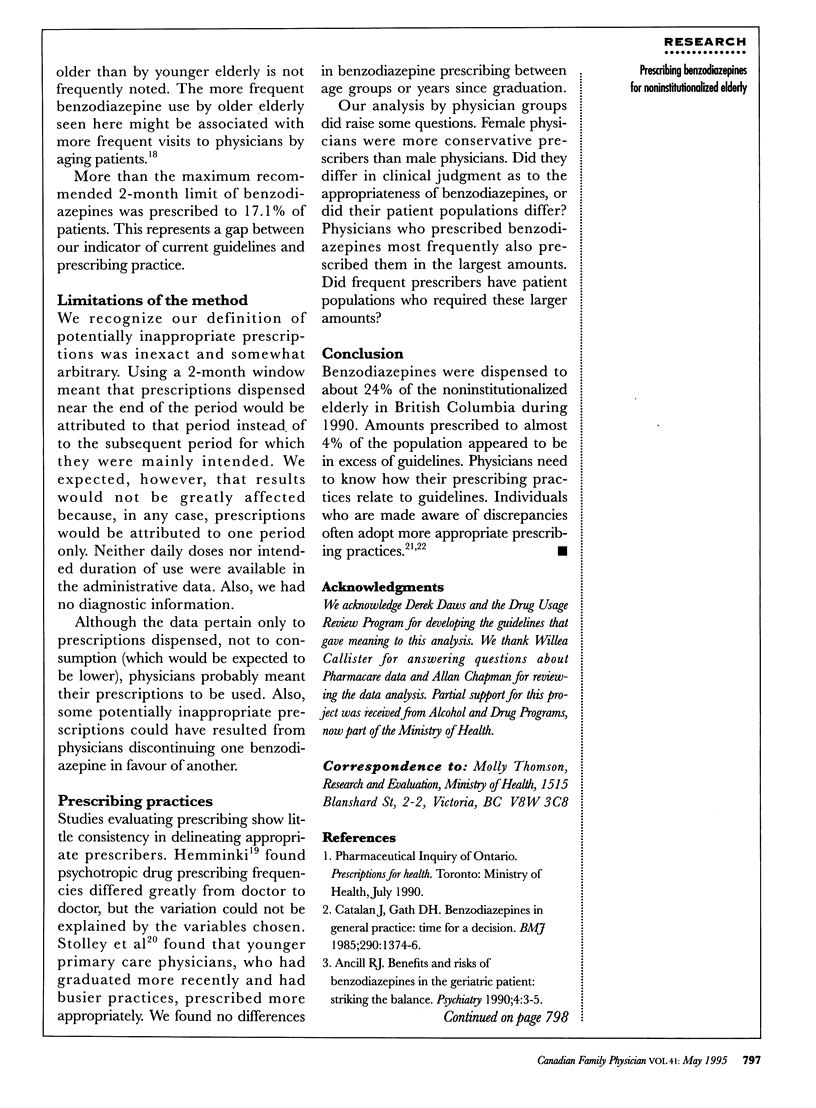
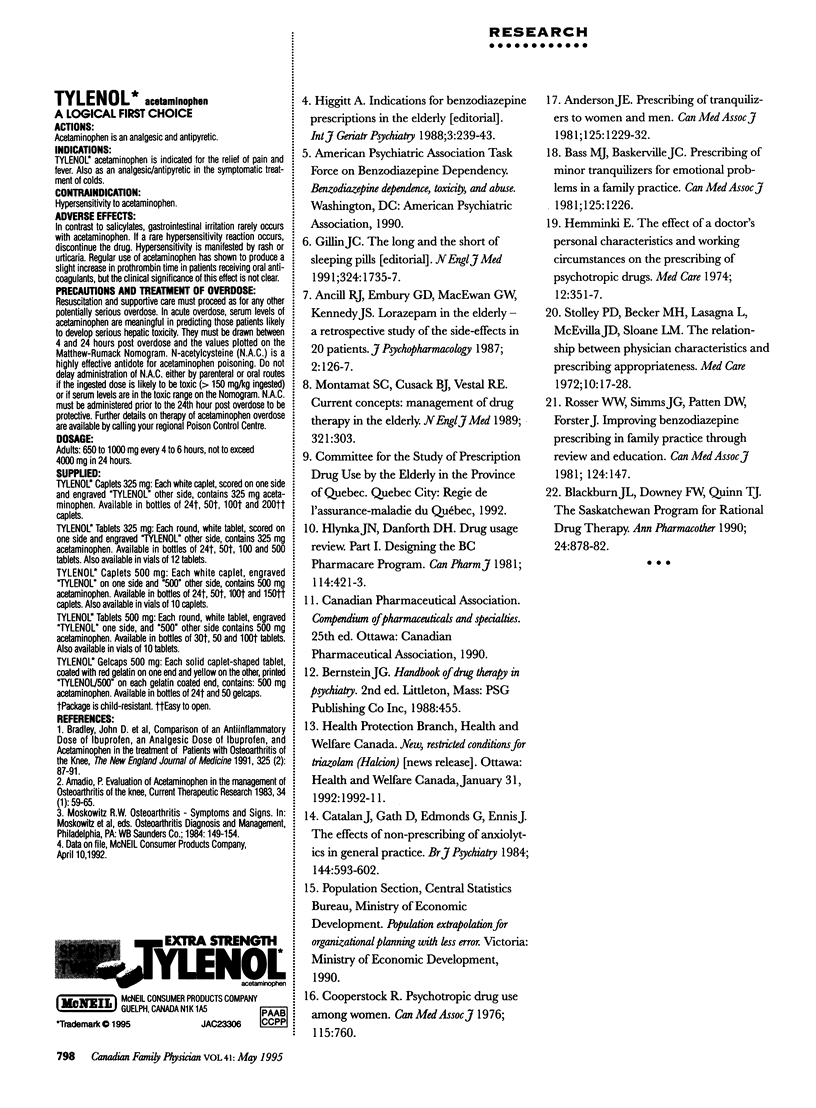
Selected References
These references are in PubMed. This may not be the complete list of references from this article.
- Blackburn J. L., Downey F. W., Quinn T. J. The Saskatchewan program for rational drug therapy: effects on utilization of mood-modifying drugs. DICP. 1990 Sep;24(9):878–882. doi: 10.1177/106002809002400917. [DOI] [PubMed] [Google Scholar]
- Catalan J., Gath D., Edmonds G., Ennis J. The effects of non-prescribing of anxiolytics in general practice. I. Controlled evaluation of psychiatric and social outcome. Br J Psychiatry. 1984 Jun;144:593–602. doi: 10.1192/bjp.144.6.593. [DOI] [PubMed] [Google Scholar]
- Cooperstock R. Psychotropic drug use among women. Can Med Assoc J. 1976 Oct 23;115(8):760–763. [PMC free article] [PubMed] [Google Scholar]
- Gillin J. C. The long and the short of sleeping pills. N Engl J Med. 1991 Jun 13;324(24):1735–1737. doi: 10.1056/NEJM199106133242410. [DOI] [PubMed] [Google Scholar]
- Hemminki E. The effect of a doctor's personal characteristics and working circumstances on the prescribing of psychotropic drugs. Med Care. 1974 Apr;12(4):351–357. doi: 10.1097/00005650-197404000-00006. [DOI] [PubMed] [Google Scholar]
- Hlynka J. N., Danforth D. H. Drug usage review. Part one: designing the BC Pharmacare program. Can Pharm J. 1981 Nov;114(11):421–423. [PubMed] [Google Scholar]
- Montamat S. C., Cusack B. J., Vestal R. E. Management of drug therapy in the elderly. N Engl J Med. 1989 Aug 3;321(5):303–309. doi: 10.1056/NEJM198908033210507. [DOI] [PubMed] [Google Scholar]
- Rosser W. W., Simms J. G., Patten D. W., Forster J. Improving benzodiazepine prescribing in family practice through review and education. Can Med Assoc J. 1981 Jan 15;124(2):147–153. [PMC free article] [PubMed] [Google Scholar]
- Stolley P. D., Becker M. H., Lasagna L., McEvilla J. D., Sloane L. M. The relationship between physician characteristics and prescribing appropriateness. Med Care. 1972 Jan-Feb;10(1):17–28. doi: 10.1097/00005650-197201000-00003. [DOI] [PubMed] [Google Scholar]


